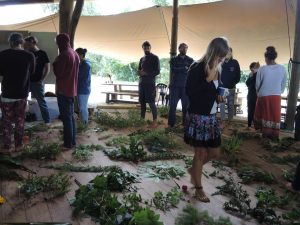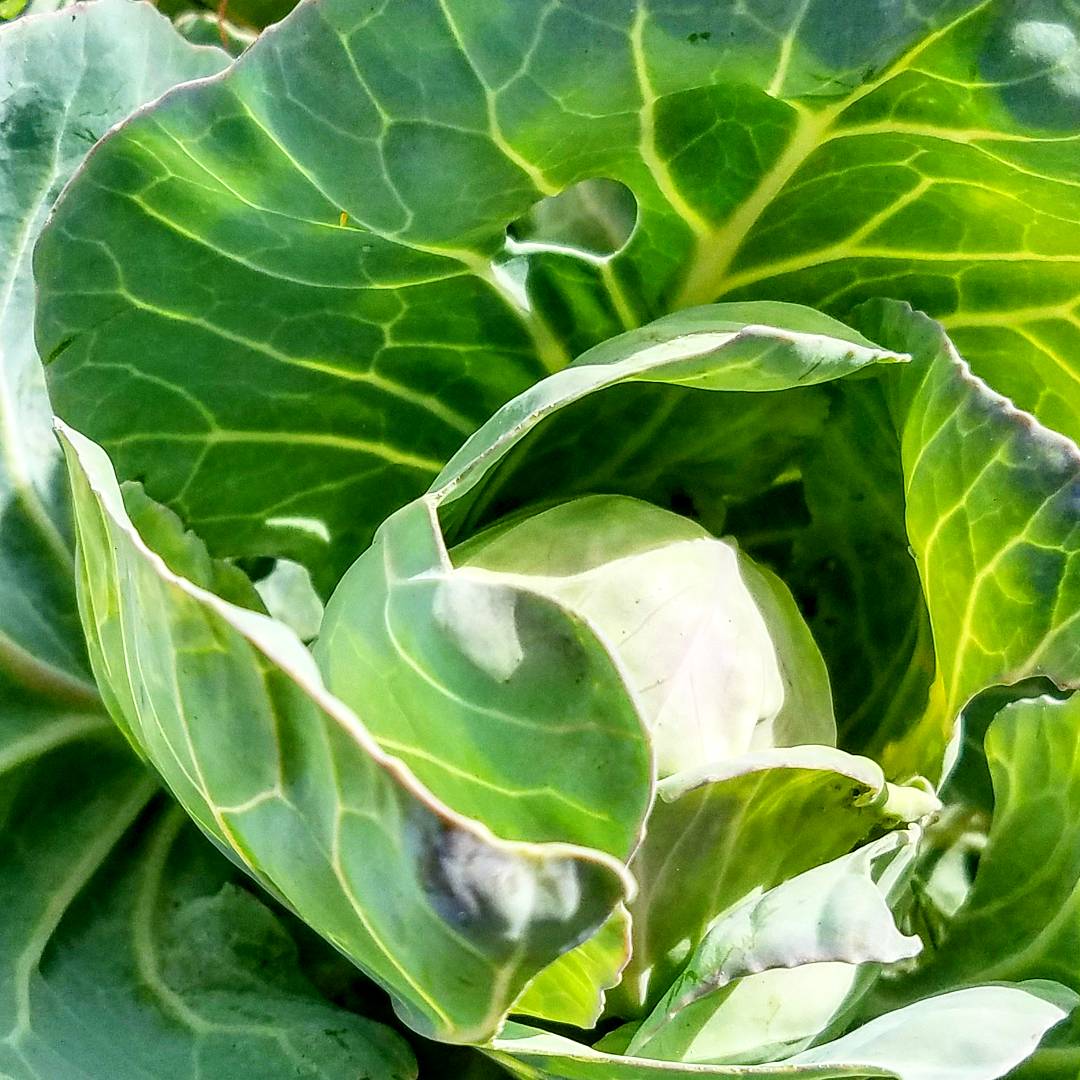One of the most important things in permaculture design is intercropping for guilds. Building a guild is like making a small family of plants who get along well together. Plants can be companions if they help each other’s seeds germinate, deter or distract pests from one another, attract beneficial insects or bees to plants that need them, or if they have similair nutrient requirements that allows them to cooperate rather than compete, and to make sense of planting in the right place.
Plants also need to be rotated based on nutrient requirements. A common cycle is:
-
heavy feeders (example: tomato)
-
light feeders (ex: onions)
-
carbon crop (ex: corn) (can be used as food, but also gives gardener carbon material, the stalk in this case, for compost making)
-
green manure (ex: clovers)
Or:
-
leaf crop (ex: lettuce)
-
Root crop (ex: potatoes)
-
flower (ex: marigolds)
-
cover crop (ex: buckwheat)
-
fruit crop (ex: squash)

C’est la vie en violet: my french friend and I practiced designing a guild with all purple-ish colored foods, plums, grapes, raspberries, black and red currants, apples, beets, buckwheat, phacelia, and crimson clover!
It is just important to consider plant families, and where each one came from originally. Get to know each species requirements for best production!
Permaculture properties can be split into zones, which are sections that meet criteria in order to save time and be convenient.
Zone zero is the home, where you live, cook, and sleep!
Zone one contains things that need to be or are likely to be visited everyday. Regular-use, higher maintenance vegetables like lettuce or tomatoes, herbs, berries, tool shed, greenhouse, worm farm, relaxation areas, etc. They are directly surrounding the house so you don’t have to be constantly walking across the landscape to get there. Things are planted in tightly knit companion planting guilds with just one or two of each species.
Zone two can hold plants that require less input and attention. Corn, pumpkins, onions, and garlic are some examples. Also, if you wish to plant a large quantity of things (lets say, 50 heads of cabbage) this can go in zone two also as to not overcrowd things. Perennials like rhubarb and asparagus come into play too. Things are planted in larger scale guilds, such as a row of something next to a row of one of its companions, and crop rotation cycles need to be followed wisely.
Zone three is larger systems like orchards and forage areas for chickens, ducks, pigs, or other animals that don’t need too much land.
Zone four is reserved for pastures for sheep, cows, horses, or goats, animals that need wide open spaces.
Zone five is wild territory which is left to its own devices. Here we can observe nature doing its thing!

Zoning exercise- each scarf represents a different area (forest, scrub land, fertile soil, etc) and we got to place different aspects around each other to create zoned systems!
Sectors are outside forces that affect the property. Sun, wind, fire, water, wildlife, seasonality, and frost all play into what you can plant and where. The key thing is just observation, making sure to spend a full year paying close attention to the land and what its niches are. Microclimates can be identified on a broader scale based on the positions of the sectors, but also in small pockets like the shade behind a tree, tall corn stalk, or a shed creating a cooler environment.
We did our first site analysis and sector/zone mapping at Inna’s house, a lovely woman in the community who came to spend meals with us and taught deep ecology. We walked around her property mapping the sun and shade, wet and dry, and identified principles and niche-filling in action.

In a shade pocket behind the house on a north-facing slope, positioned for optimal sun income! (note: in the northern hemisphere it would be south facing instead)



